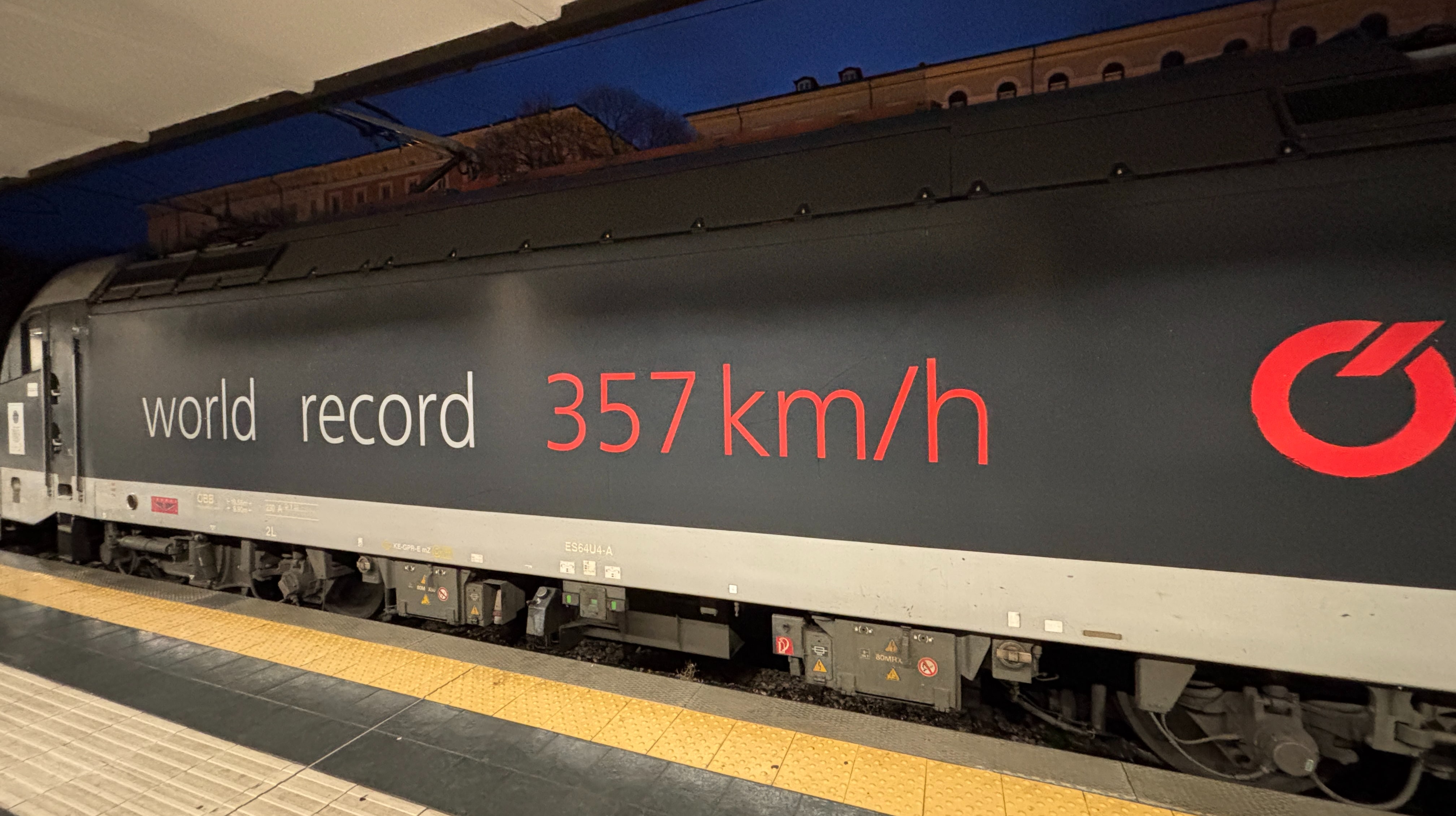
Ljubljana to Trieste with the World's Fastest Electric Locomotive
The once-daily Eurocity service is a scenic, comfortable way to travel between the two ex-Austrian cities.
Introduction
There are three trains a day linking Ljubljana and Trieste: two regional services at inconvenient hours (05:50-08:33 and 18:47-21:32) operated by Trenitalia, and requiring a change of trains at the border. Tickets for these regional trains can only be purchased at the station at a fixed price of €11.40, regardless of when you buy them, though you can verify schedules online.
A single ÖBB Eurocity train runs daily, leaving Ljubljana at 14:23 and arriving in Trieste 17:16—the best option for enjoying views en route. Tickets can and should be purchased in advance, as fares rise closer to departure up to a maximum of €27.60 for a fully flexible ticket (which is what you’ll get booking at the station shortly before departure). I booked my ticket two days in advance and was still able to secure the cheapest-possible fare of €9.90.
Departure
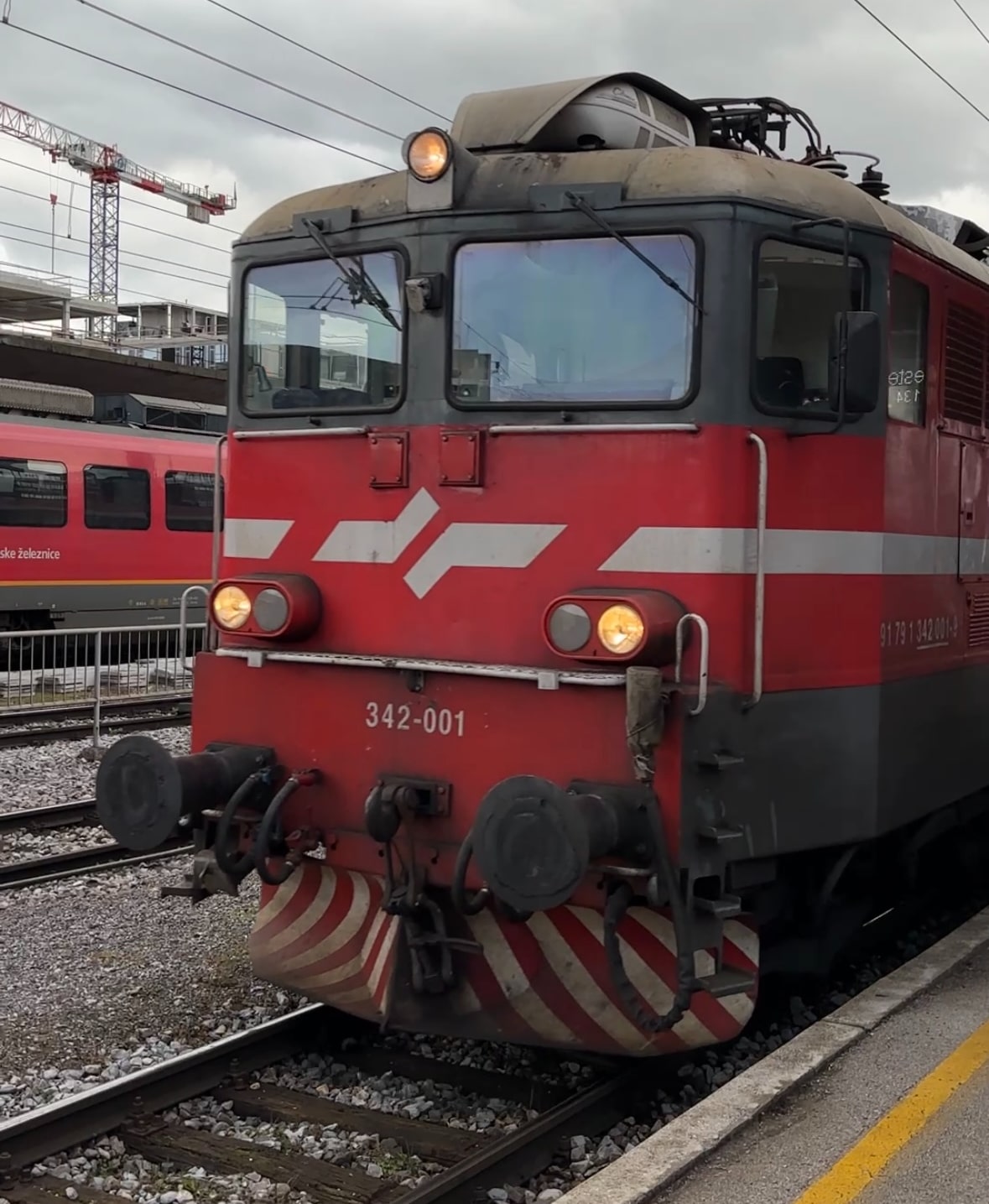
Our first locomotive of the trip arriving into Ljubljana.
Since this is a continuing service from Vienna, there is a greater potential for delays than the regional Italian trains. We left with a ten minute delay, though made up some time en route. There are plentiful options for coffee and food at Ljubljana station; while there is a restaurant car attached Vienna-Ljubljana, this is detached for the journey on to Trieste so stock up beforehand.
On Board
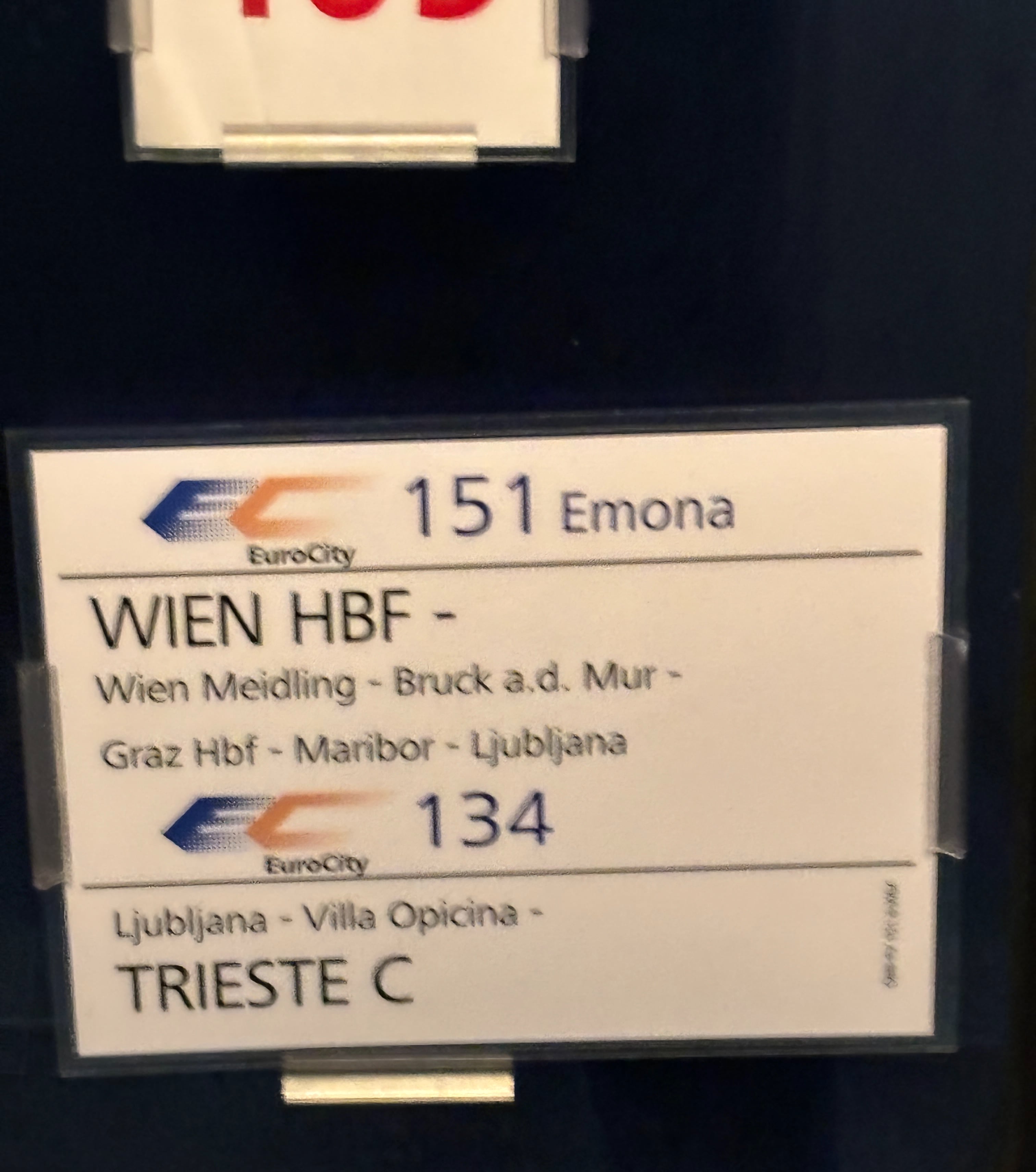
Signs on each door indicate which compartments stop at Ljubljana and which go all the way from Vienna to Trieste.
There were three Austrian second-class carriages making the journey, all second class with open seating in a 2-2 configuration, with most seats being groups of four with a table in the middle. This service is more popular as a domestic service linking a handful of Slovenian towns along the way, and only four passengers, myself included, made the full trip. The train was never more than 10% full, and I had a four-seater section to myself for the full journey.

A second class coach all to myself.
Power sockets and reading lights are equipped at each seat, and washrooms are located at either end of each carriage. Tickets were checked only once shortly after leaving Ljubljana. There were two police checks along the way: once, briefly, at Divača in Slovenia, where officers walked through the train without saying a word, and then again in Italy at Villa Opicina, where both Slovenian and Italian police walked down the length of the train. Unlike crossing from Croatia to Slovenia by train, I was not asked to show my passport.
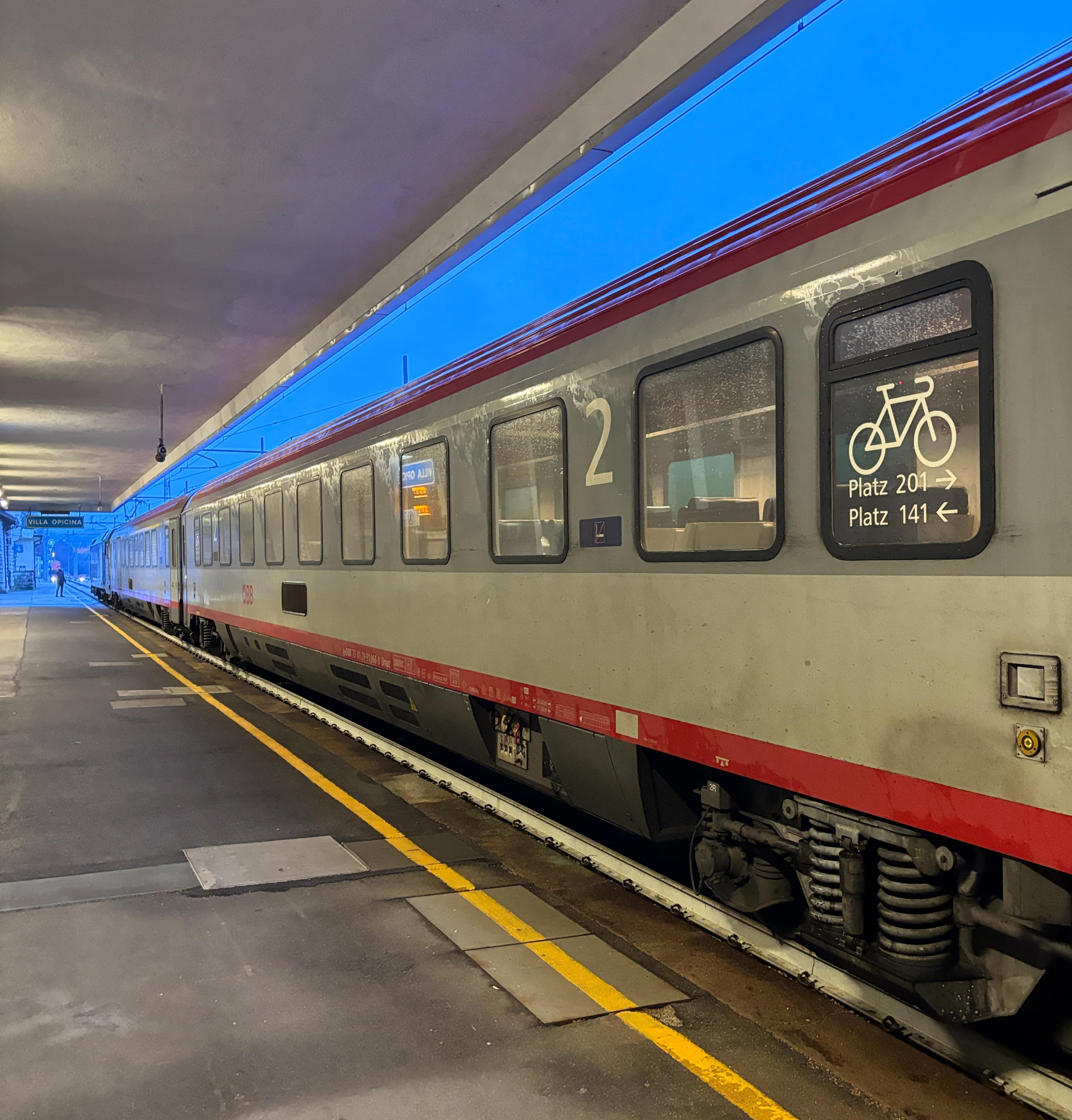
Our train waiting at Villa Opicina, across the border into Italy.
We waited around 20 minutes at Villa Opicina. Unlike the regional trains, passengers on the Eurocity do not have to change here: the train changes for you, with a new locomotive taking over. This turned out to be number 1216 050, which set a speed record in September 2006: 357 km/h (221.8 mph), the fastest recorded by an electric locomotive.
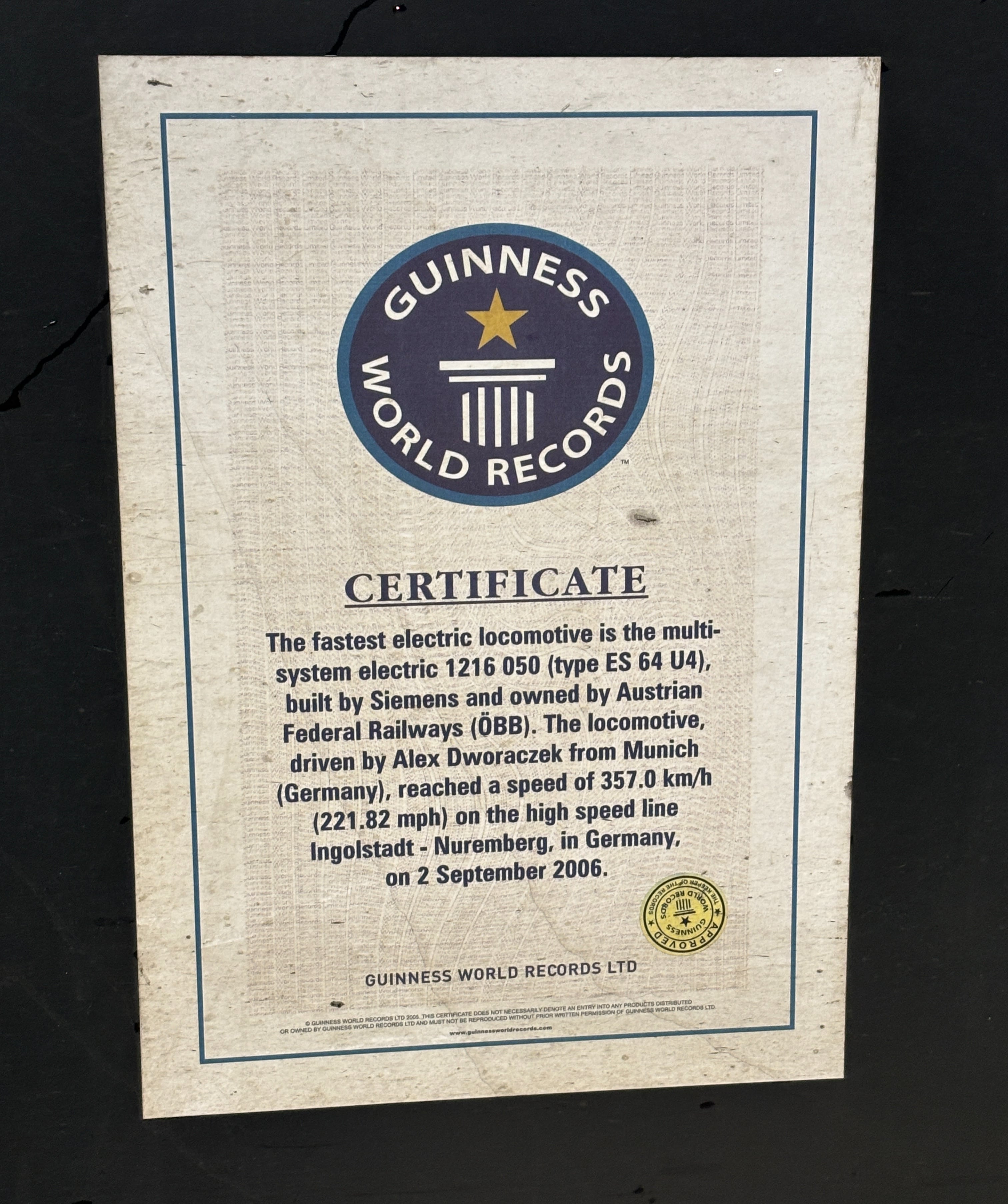
Our locomotive wasn't exactly pushed to its limits on this trip.
We wouldn’t reach speeds nearly that high today: despite being only four kilometres from Trieste as the crow flies, due to a steep incline that trains can’t handle we would divert ten kilometres north, all the way to Nabrežina, before turning back south to retrace our tracks along the coast.
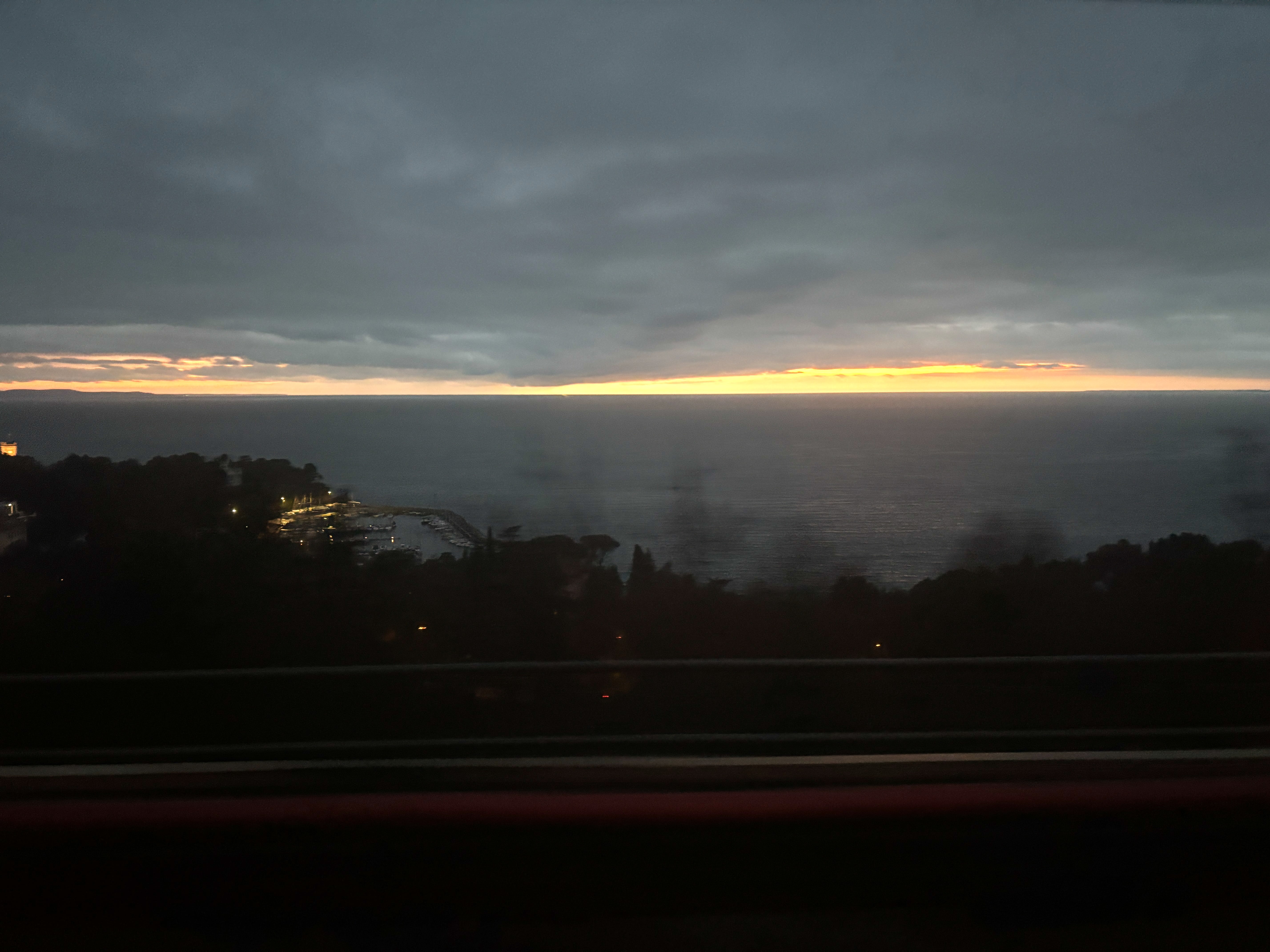
At a different time of year, the Eurocity service offers sweeping views over the Gulf of Trieste.
We arrived only seven minutes behind schedule at 17:23—not bad, considering this service began more than nine hours and 500 kilometres ago in Vienna.
Final Thoughts
You can get between Ljubljana and Trieste quicker and more flexibly by bus, but for my money I’d take the train any day. Winding through the Slovenian countryside was a relaxing way to pass a few hours, and I’m sure the regional trains would have been fine too. All in all, a pretty good deal for less than €10.